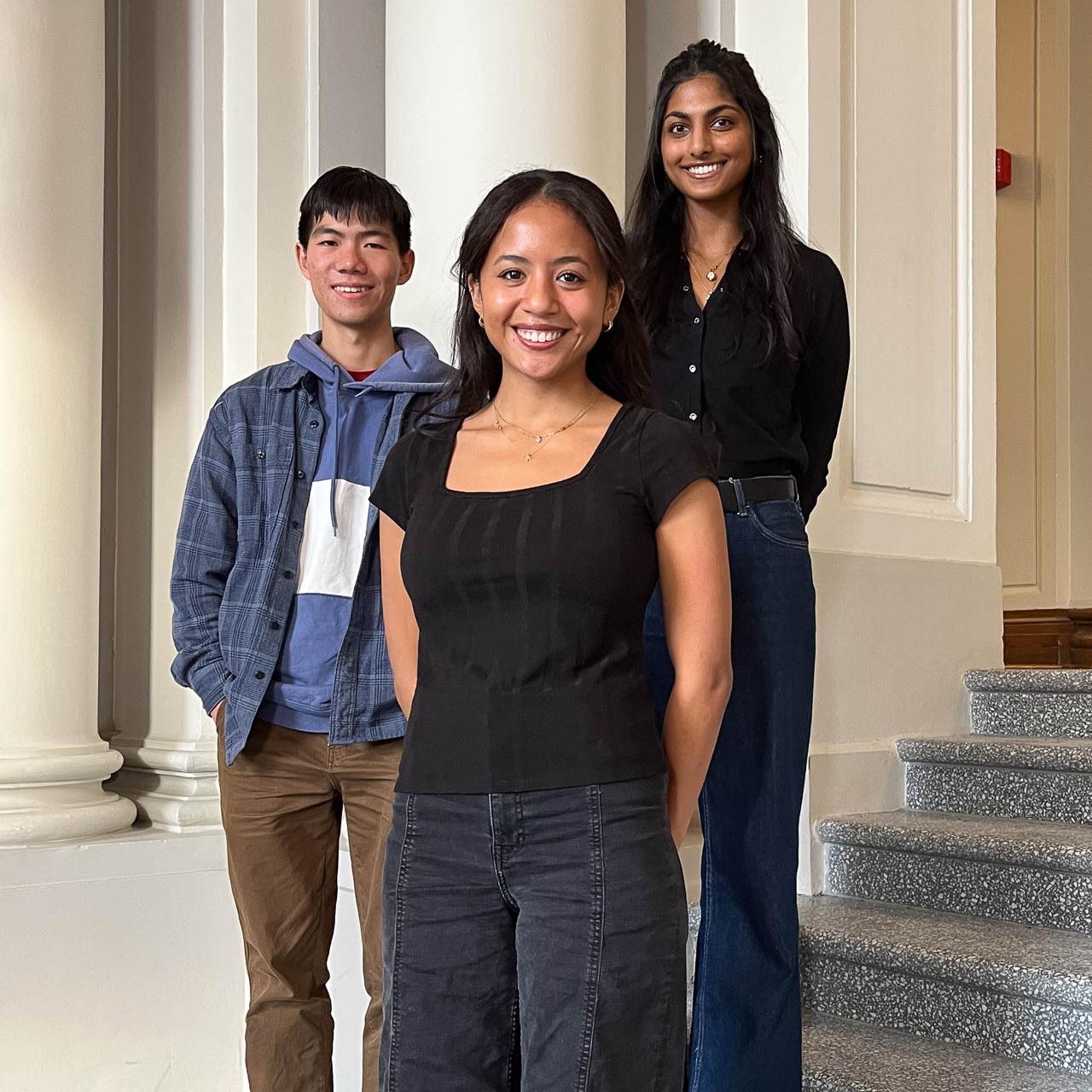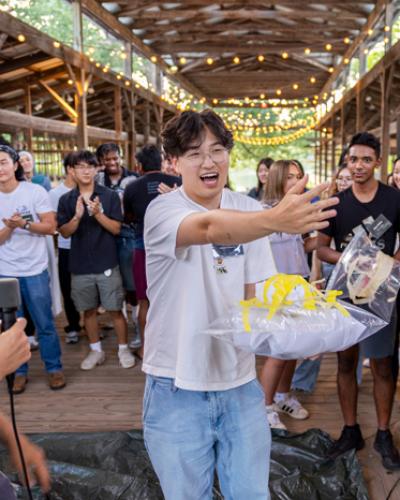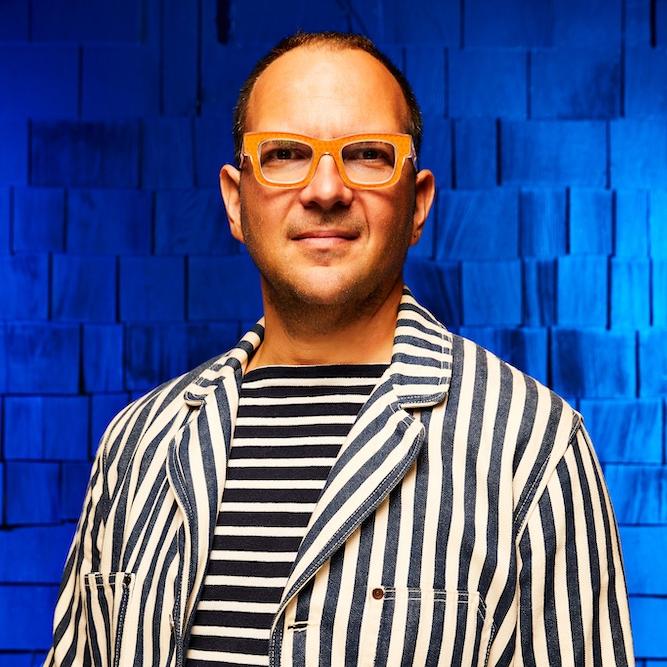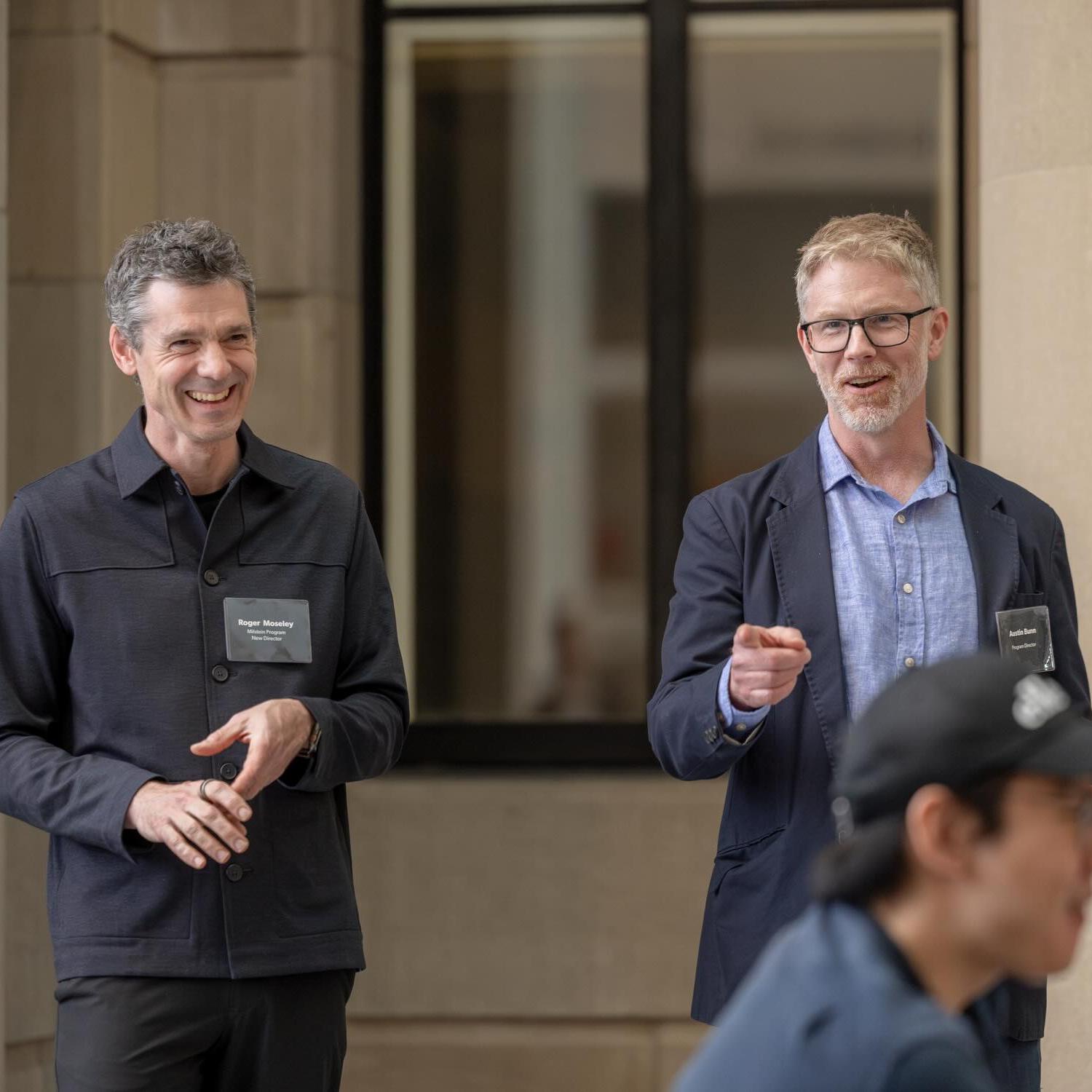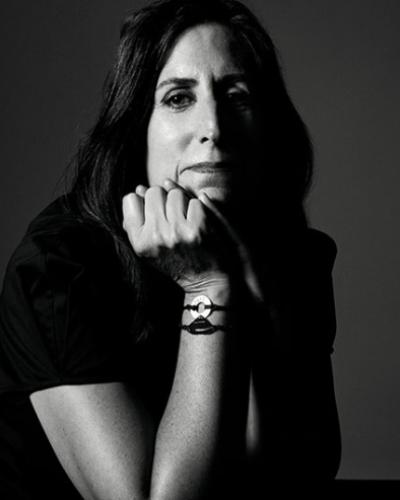What would experiencing the news be like, if you could be at the scene yourself? Would you be more likely to take action on issues that spoke to you? Nonny de La Peña, the founder of Emblematic Group and a personage called “the Godmother of VR” by some, is here to open your eyes to the possibility of that experience.
Ms. de la Peña spoke to the Cornell community and Milstein Program students in a webinar hosted by eCornell on April 8th, as part of the Milstein Program’s ongoing “In Focus” Speaker Series. This series features industry leaders working at the intersection between technology and humanity, the struggles they have faced in their unique and trailblazing efforts in their respective fields, and how they overcame those struggles. The talk was moderated by Tapan Parikh, a professor of Information Science at Cornell Tech, and Anna Huff Mercovich, an Assistant Professor of Digital Arts at Hamilton College.
de la Peña opened the talk by introducing Emblematic - where she is founder and CEO, that is comprised of programmers, reporters, and visionaries using various technologies like virtual reality and artificial intelligence to present news stories integrated into virtual reality (VR) so people can experience ‘immersive journalism’, a style of journalism that immerses the audience in the story.
de la Peña’s background is more than prepared to spearhead this pioneering journalism effort. She got her start in journalism, working for Newsweek reporting on “crack dens.” As VR emerged as a technology, she became intrigued and was involved from the very beginning, helping the man who would eventually develop Oculus Quest. Getting a start in the expensive industry was difficult. She often had to pay out of pocket, and access to building materials was limited.
Some key terms introduced in the talk to help you better navigate the exciting world of immersive journalism: “duality of presence” refers to when viewers feel both their presence in the real world but also their presence actually in a VR news story, and they can be somewhere outside of where their physical body. “Photogrammetry” and “volumetric capture” are the techniques used to capture all the 3D shots needed to reconstruct a space or person in VR, and “spatial reporting” describes reporting not only the events but also the people and things in relation to each other in that story.
The talk moved briskly, going through intense story after story, people and places charged with human emotion and relevance to humanity at large. The stories that were selected spoke to what the Milstein Program aims to do - take technology and use it as a tool for illuminating human voices. The first story covered was about an undocumented immigrant beaten by the police force; de la Peña explained that the experience was shown to people who were told they would be playing an innocuous game to create a more jarring impact. The result was raw and authentic. Of similar gravity was a piece on homeless LGBTQ youth, another on domestic violence. De la Pena also showed us how immersive journalism could breathe new dimensions of life into lighter stories, like the documentation of one Hong Kong artist’s project to move a wall brick-by-brick across Hong Kong; another one a biography on Mary Caplin Goddard, an 18th century female photographer and newspaper writer who printed the Declaration of Independence. The goal, says de la Peña, is something she calls “embodied digital rhetoric”, where the digital, interactive medium of the reporting and its ability to take its reader into the story makes the piece more persuasive.
The wrap-up for the talk concerned plans for the future. Emblematic’s current biggest project is Reach, a platform that aims to “democratize immersive creation” by allowing subscribed users to create volumetric stories themselves. The platform would allow you to create your own VR media pieces, whether it be to create promotional content or contribute to journalism yourself. They plan to launch the project soon and hope that the platform will help create a new wave of immersive content generation.
The reporting of sensitive topics, especially in an immersive type of experience that heightens all sensory input, naturally should raise concerns. Responding to the question “How do you ensure the tenets of journalism remain intact during the VR process (so the viewers’ experience is not a sensationalized version of the actual event)?”, de la Pena expressed that it was important to keep in mind the purpose of journalism. She generally considers the stories to not be sensationalized in nature but says that the VR medium they are communicated in might make them feel sensationalistic and voyeuristic to observe. She reconciles the ethics while crafting a reported experience by involving its subjects in the creation process and by keeping ethics in mind.
Another questioner asked de la Peña if she saw VR becoming more accessible or normalized for everyday people, or if there was some effort college students should be making to spread the word. To that, de la Peña answered that big tech is aware of the potential of VR as a technology and that she does “see this really growing movement to include it in education”. She commended the Milstein Program on its efforts to include VR opportunities for students in the program and encouraged students to pursue DIY efforts since technology is becoming more accessible.
An electrifying talk that gives exciting hope for the future of VR and journalism, “Embodied Narratives” shone a spotlight on the work of a visionary and pioneer. The Milstein Program is honored to have hosted Nonny de la Peña and her work is something we will hopefully experience in real life in the future. The keynote can be watched on eCornell’s website.
Launched in 2017, the Milstein Program offers a unique multidisciplinary curriculum to students in the College of Arts & Sciences, with workshops in design thinking, community engagement and technology topics, and two summers programs spent at Cornell Tech in New York City.

